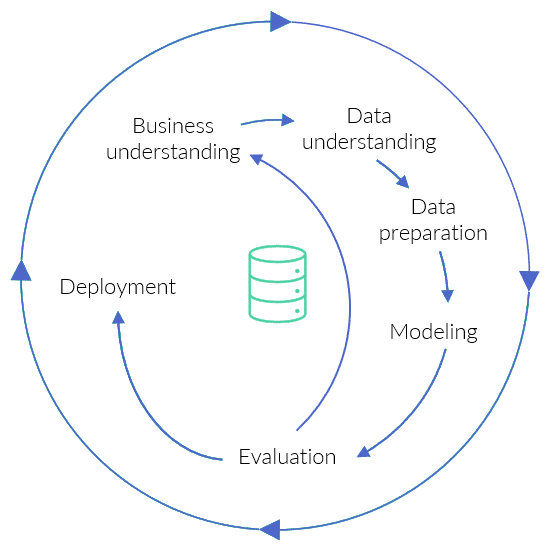Recognising trends with data analytics
Data analytics is the process of examining data sets to draw conclusions about the information they contain, increasingly with the help of specialised systems and software. Data analytics technologies and techniques are widely used in commercial industry to enable organisations to make more informed business decisions. As a term, data analytics predominantly refers to a range of applications, from basic business intelligence (BI) and reporting to various forms of exploratory data analysis (data mining). Data analytics initiatives can help companies increase revenue, improve operational efficiency, optimise marketing campaigns and customer service, respond faster to new market trends and gain competitive advantage over their rivals – all with the ultimate goal of improving business performance.
Standardised analysis with CRISP-DM
Bross Consulting base their data analysis on CRISP-DM according to Shearer, a cross-industry standardised process model for data mining. The partially iterative procedure according to CRISP-DM runs in the following six phases: Operational understanding, data understanding, data preparation, modelling, evaluation and application.
Operational understanding
The process of analysing data begins with an understanding of the company, which includes a description of the company’s situation and the task at hand as well as the formulation of the objective to be achieved.
Data understanding
The aim of data understanding is reproducible data collection and checking the data quality for completeness and content relevance.

Data preparation
In the data preparation phase, measures are carried out to ensure that the data can be modelled. This includes cleansing, transforming and formatting the data.
Modelling
In the modelling phase, the first step is to select a suitable modelling technique. Depending on the purpose of the data analysis, simple statistical methods through to artificial intelligence methods are available.
Valuation
The evaluation is carried out by separating the data set into test and forecast data sets, which is intended to ensure the quality of the model. This is done by comparing how close the model comes to the historical test data.
Application
After a successful test and a satisfactory data analysis as well as a positive evaluation of the model, it is applied with the forecast data. Finally, the modelled result is available.
Do you need support in analysing your data?
Contact our data analytics experts for a free & non-binding consultation.
